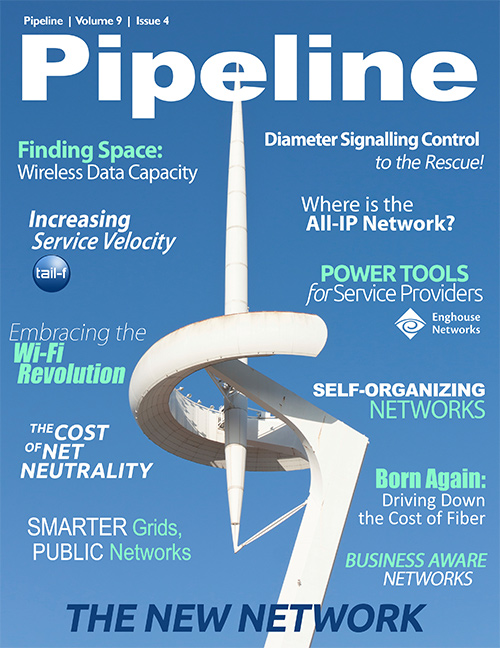Inside the NGN Toolbox: Power Tools for Service Providers
By: Sunil Diaz
 Consumers and carriers alike are excited at the pace of advancement of the Next Generation Network (NGN), but the buzz surrounding the evolution has far outshined the challenges with migration from
legacy networks to offering next generation network based services. Convergence in the telecom industry has also left many service providers scrambling to handle the increased complexity of their
own operations. However, help is on the way. There are enterprise solutions paving the way for service providers to more efficiently roll out services and become industry leaders – or Next
Generation Service Providers (NGSPs).
Consumers and carriers alike are excited at the pace of advancement of the Next Generation Network (NGN), but the buzz surrounding the evolution has far outshined the challenges with migration from
legacy networks to offering next generation network based services. Convergence in the telecom industry has also left many service providers scrambling to handle the increased complexity of their
own operations. However, help is on the way. There are enterprise solutions paving the way for service providers to more efficiently roll out services and become industry leaders – or Next
Generation Service Providers (NGSPs).Steve Kruse, V.P. of IT Solutions for Comcast’s New Global Telecom subsidiary, highlights the key actions every NSGP needs to do to sustain a business. “First, they need to be able to acquire new customers. But beyond that, they need to be able to package new service offerings, deliver those services quickly, and then manage changes to the network on an ongoing basis. Market share, customer satisfaction, churn and profitability are key metrics that are carefully measured and monitored.”
There are a number of critical challenges facing service providers today. For the purposes of this article, we will examine a couple of areas. In a highly deregulated environment, the NGSP has a wide choice of service provider partners that they rely on to carry traffic. Each of these route choices has an impact on the bottom line. Working with a larger number of partners requires automation as opposed to relying on manual processes that were adopted in the world of legacy networks. As another example, high-value enterprise customers expect a concierge level of differentiated service – they expect guaranteed service levels and QoS. This is typical of many cable MSOs, such as Comcast, that offer enterprise voice services. In order to differentiate levels of service offered, the NGSP must know who their customers are, where they are, and how their services are delivered; not only within their own network, but the choice of partners that they in turn need to work with. There are a plethora of enterprise solutions on the market today that can enable NGSPs to realize many of these objectives. This article focuses on a number of solutions that can deliver immediate return on investment (ROI).
Intelligent Routing – Enhancing Your Bottom Line
Intelligent Routing (IR) platforms offer advanced analytics into supplier diversity, margins, and profitability. They enable real-time margin assurance by centralizing and automating routing policies and network control. Typically, they address unique requirements of the Interconnect team to negotiate better rates, increase the number of suppliers, lower costs, and improve operating margins.




















